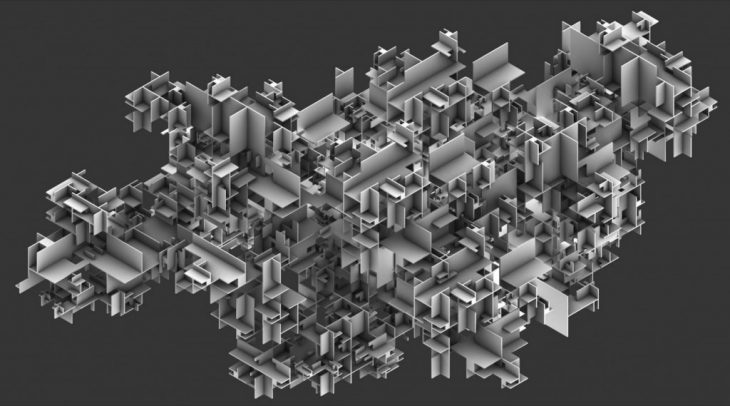ADVANCED ALGORITHMIC DESIGN STRATEGIES
Senior Faculty: Alessio Erioli
Senior Faculty: Andrea Graziano
 Image Credits: © a3 2019 – prof. Alessio Erioli, Università di Bologna / Co-de-iT –
Image Credits: © a3 2019 – prof. Alessio Erioli, Università di Bologna / Co-de-iT –
work by Beatrice Vara, Carmen Maria Giordano, Valentina Dell’Infante – Assistant: Lapo Naldoni
The seminar will explore the dual geometric/topological computing nature of spatial systems, from basic iterative logics explored through Grasshopper and the Anemone plug-in, to more sophisticated network-based and topology-based stigmergic strategies using both standard and bespoke components.
This seminar will focus on assembly/growth processes, investigated through iterative algorithmic strategies, and applied to an urban-block size architecture starting from elementary spatial building blocks. The building blocks used will be treated as basic units of computation, able to store and compute data due to their topological and spatio-geometric qualities. Growing assemblies of these elementary, generic components, create assemblages/networks whose emergent properties and constraints at intermediate and global scale define novel computational entities and conditions, which in turn fold back with feedback implications on the design of both the component geometry/topology and their rules of engagement.
The algorithmic process starts from the definition of the basic components as computational building blocks, their embedded/encoded properties and constraints, their growth protocols, and the information environment within which they interact. As a result, coherent spatio-geometric assemblages and topological data networks emerge simultaneously during the growth process. Their organisational structure can work as a computational matrix for agent-based system (such as stigmergy-based strategies), revealing them as computing devices to store, elaborate, and redistribute information, generating larger patterns and triggering change at the local level. Assemblages are affected by both endogenous (internal to the system such as procedures and criteria encoded into the basic components) and exogenous (external to the system such as a pervasive data field or a localised external boundary, whether physical – such as a wall – or semantic – such as a normative limit – in nature) factors.